Why current is negative in this situation? Because EMF and current directions are the opposites?

simulate this circuit – Schematic created using CircuitLab
Can someone give me a good explanation on relationship between current and EMF?
Why current is negative in this situation? Because EMF and current directions are the opposites?

simulate this circuit – Schematic created using CircuitLab
Can someone give me a good explanation on relationship between current and EMF?
When the current is negative it means that it is actually flowing in the opposite direction of the arrow. For instance if you travel -20 feet in the "up" direction, that means the same thing as traveling 20 feet in the "down" direction. Either way it means the same thing, but one of them is kind of a double negative.
As you are setting up a problem, it's less confusing if you point your current arrows in the direction you know the current will be moving. But sometimes you don't know ahead of time, so you end up with a negative current for an answer. That just means the current is going the opposite direction that the arrow is pointing.
The current always flows from the more positive voltage to the more negative voltage (aka emf), so in this problem current will flow in the opposite direction of the arrow. As detailed above, electrons actually move the opposite direction as the current -- the movement of negative electrons in one direction is the same thing as positive charge moving in the opposite direction. Don't think about this too hard before you master the basics, if you can help it. Just imagine that there are positive charges moving the same direction as the current, and that's all there is to it (even though it's a lie).
I'm sure other questions address this better so I will be brief: EMF is voltage, which you can think of as being like water pressure. Current is how much charge is flowing though your circuit each second, like how much water is flowing through a pipe. A large resistor is like a small opening the current passes through and a small resistor is like a large opening the current passes through -- the smaller the resistor the more current can push its way through for a given voltage. Ohms law describes this relationship mathematically.
The conventional current idea is that current flows from the positive to negative terminals of a supply. However conventional current assumes the flow of positive particles, which is not actually correct.
As you should know the flow of real current is by electrons which are negative particles. So the real current (of electrons) actually flows from the negative terminal to the positive terminal of a supply.
In calculating the basic function of electrical circuits the actual flow is not so important as long as you stick to one consistant convention.
When getting into semiconductor theory you will hear the term "the flow of holes", this also implies the flow of positive particles, though as above that is not really what happens. The true flow is still by electrons. (To add a bit more confusion, another idea is that the flowing "electrons" fill these "holes" as they flow. So you might visualize that the so called holes flow in one direction as the electrons flow in the opposite direction.)
All in all, unless you're working deeply in semiconductor physics, just stick to the conventional current flow, (flow of a theoretical positive particle) and all will work out.